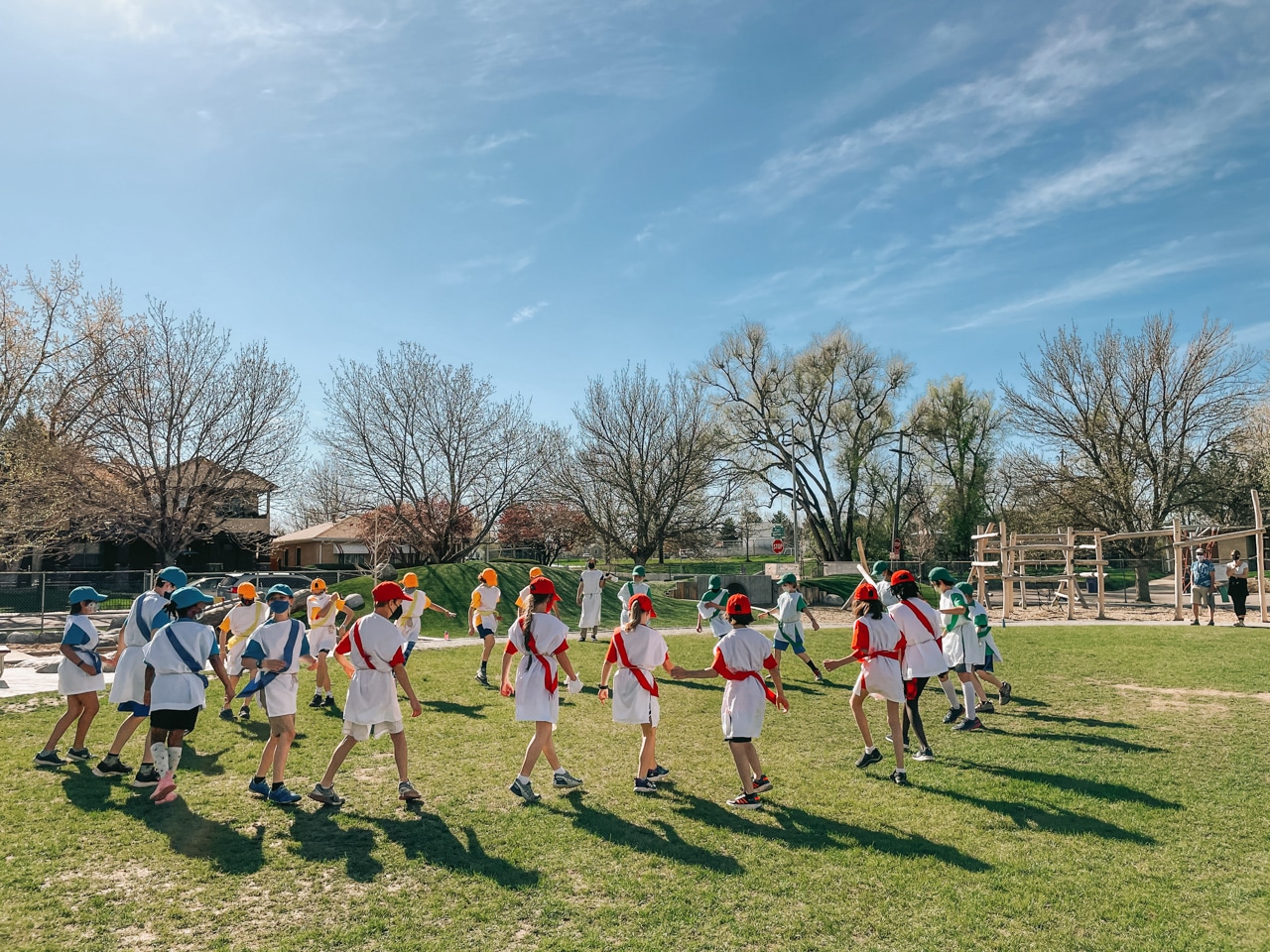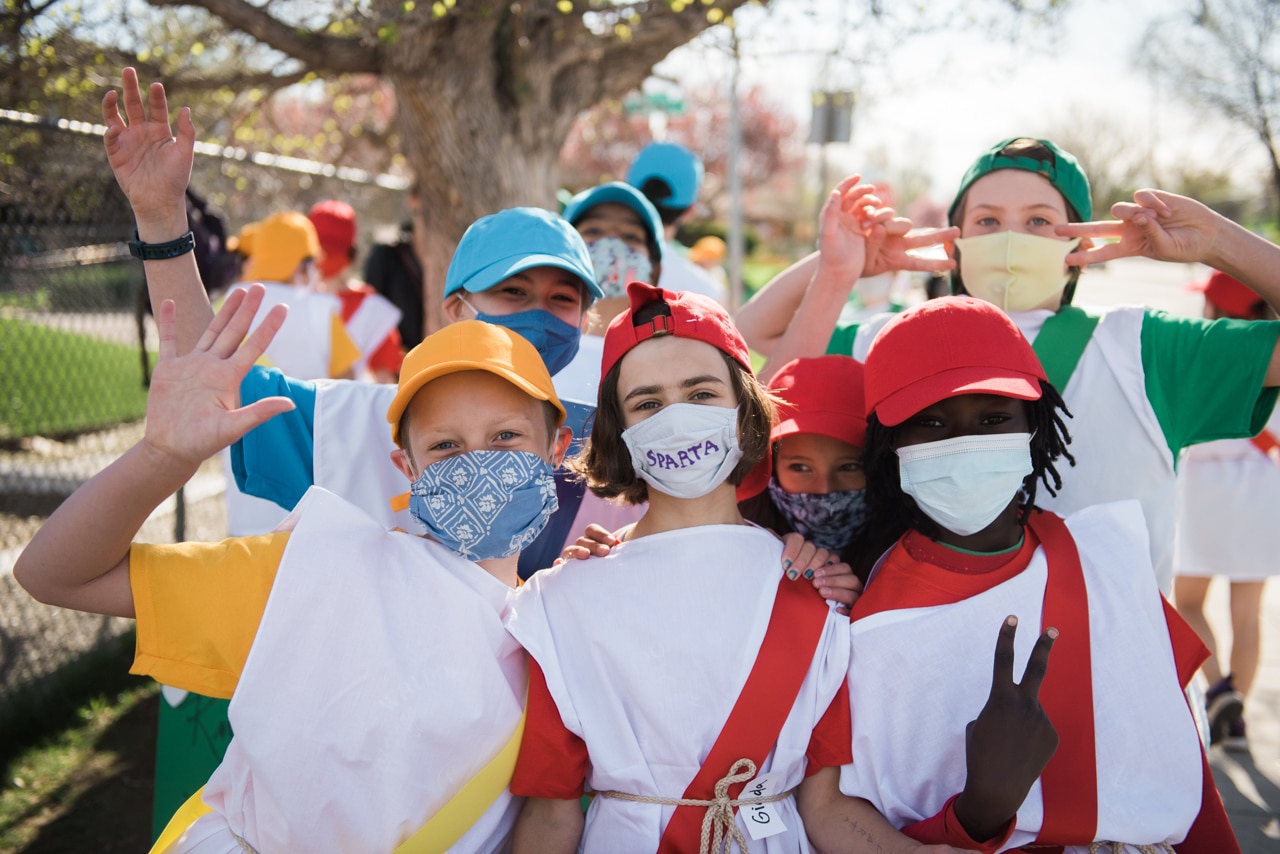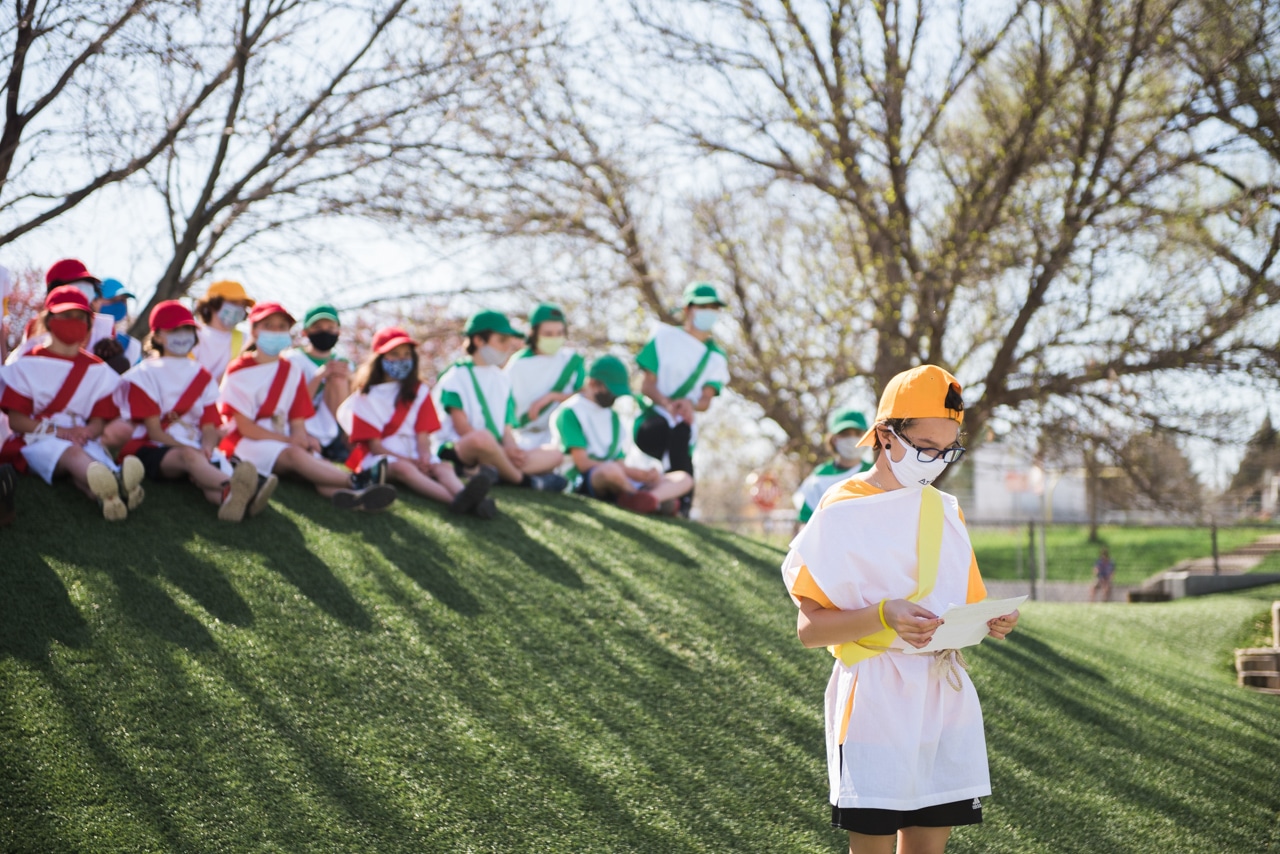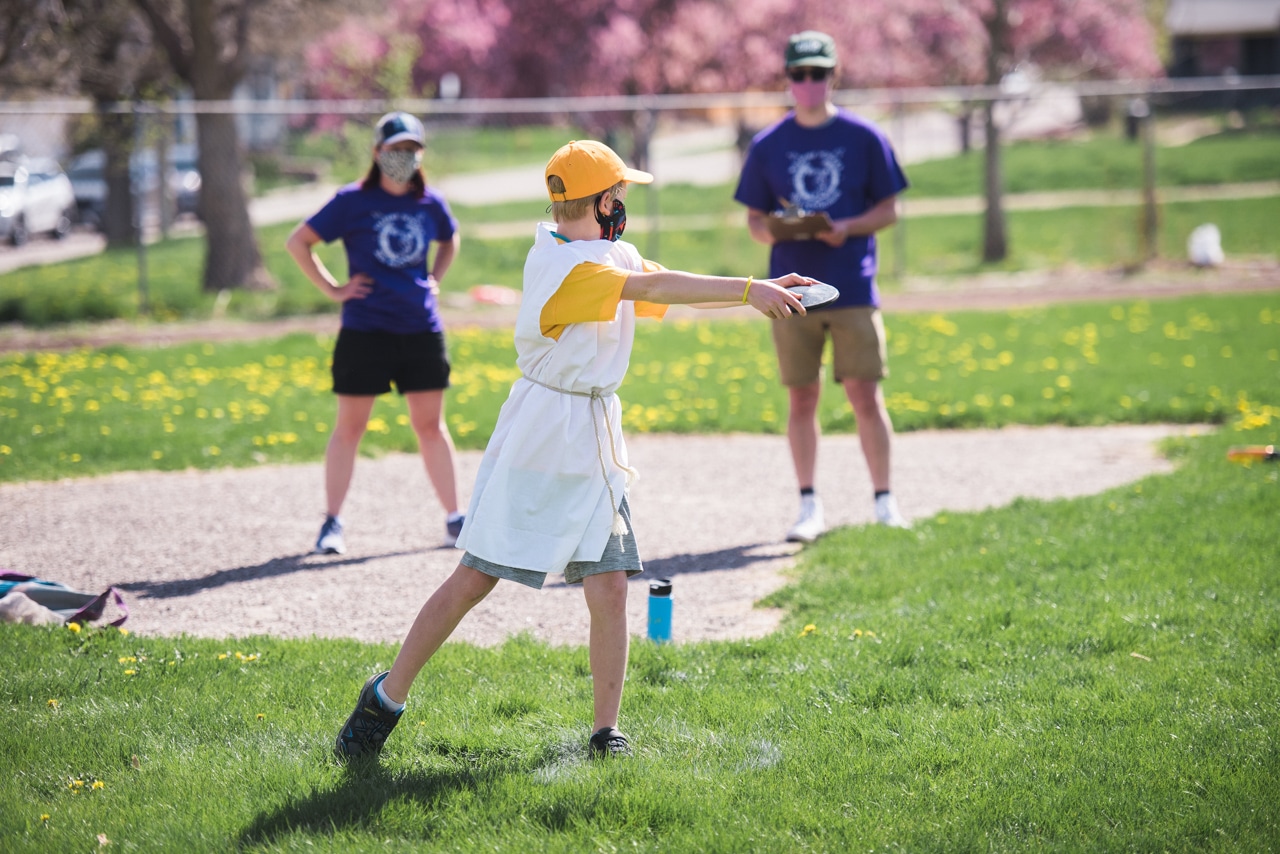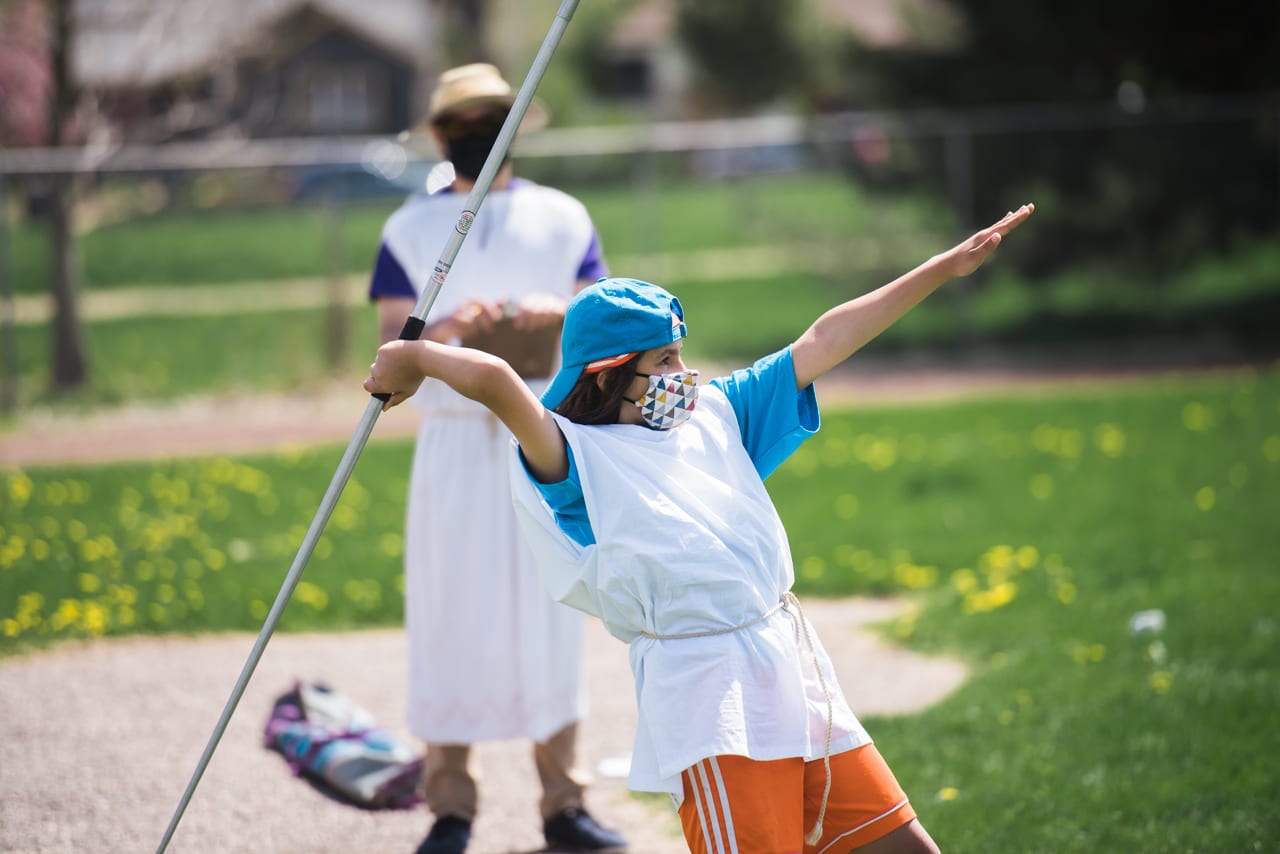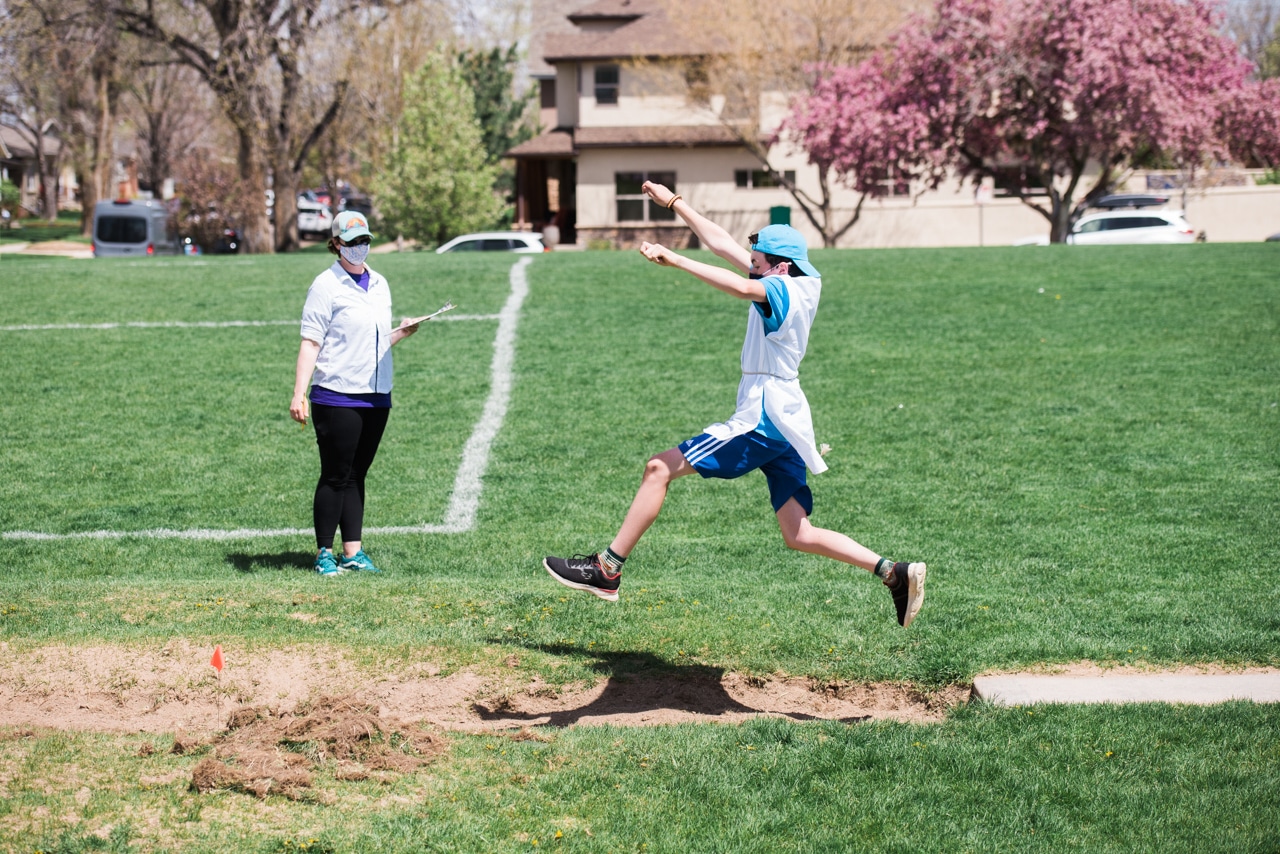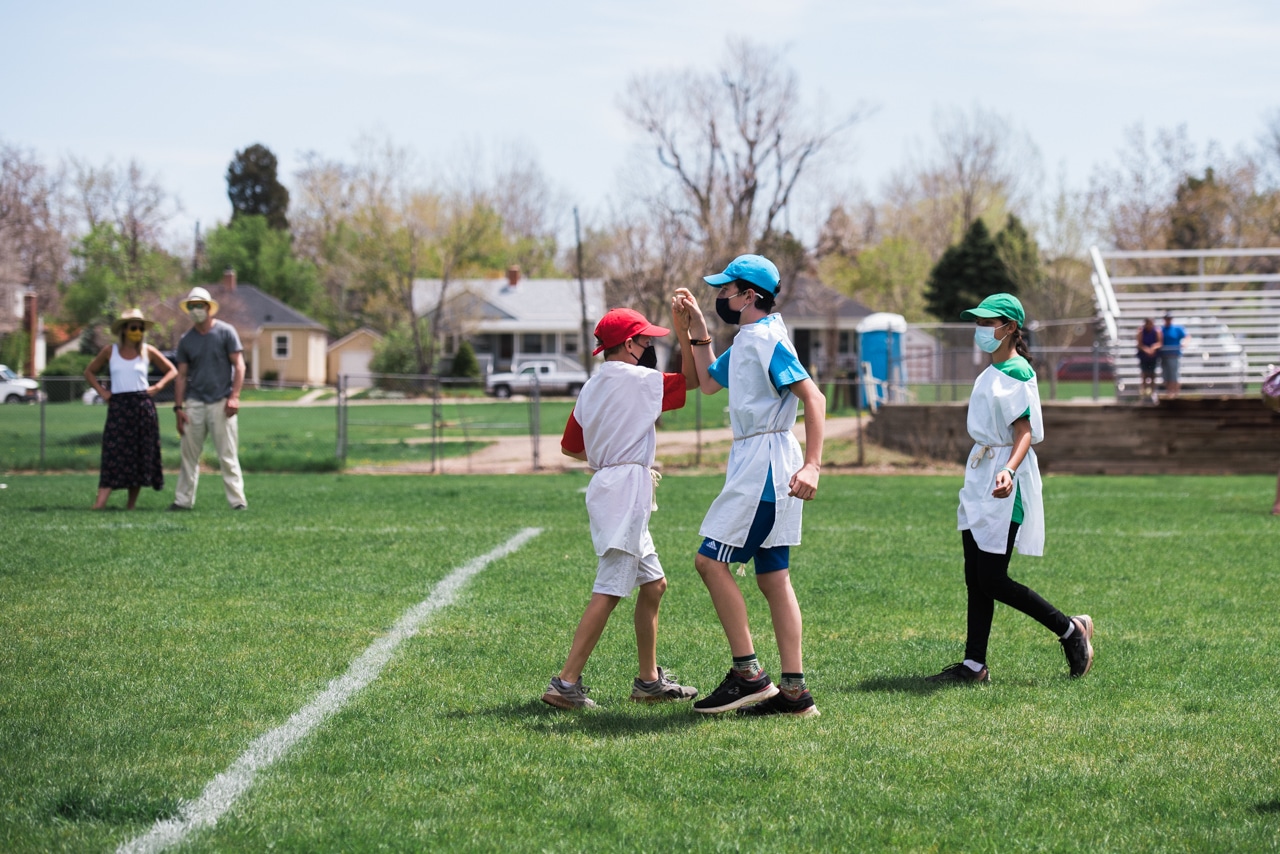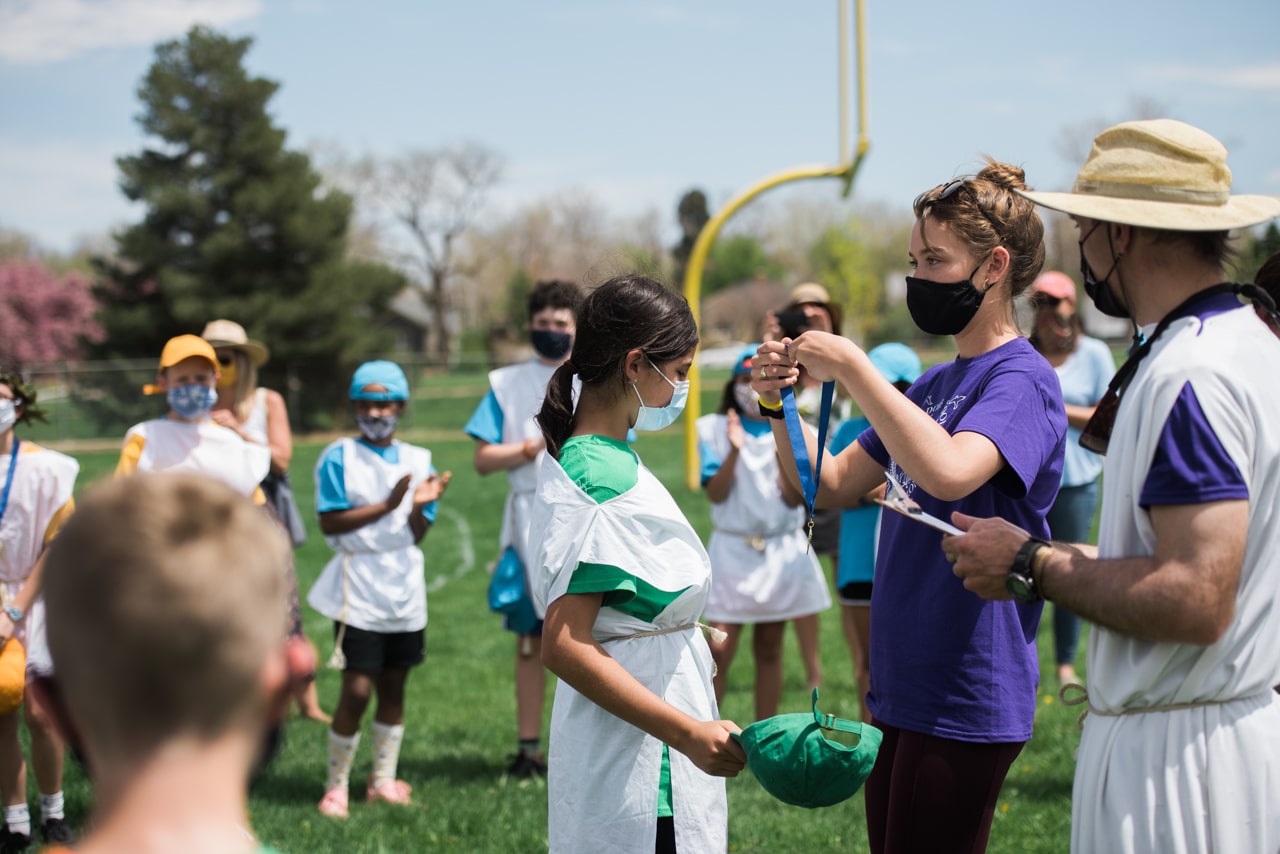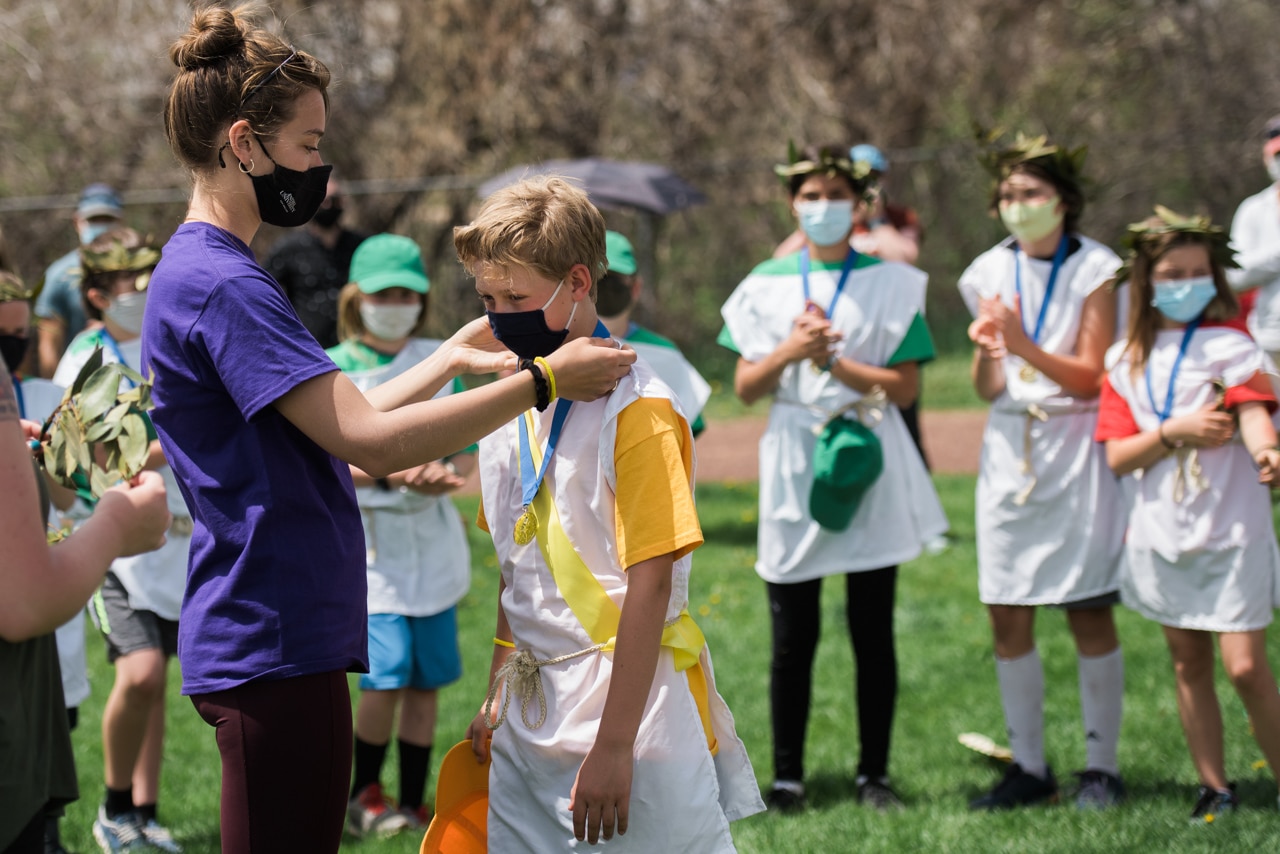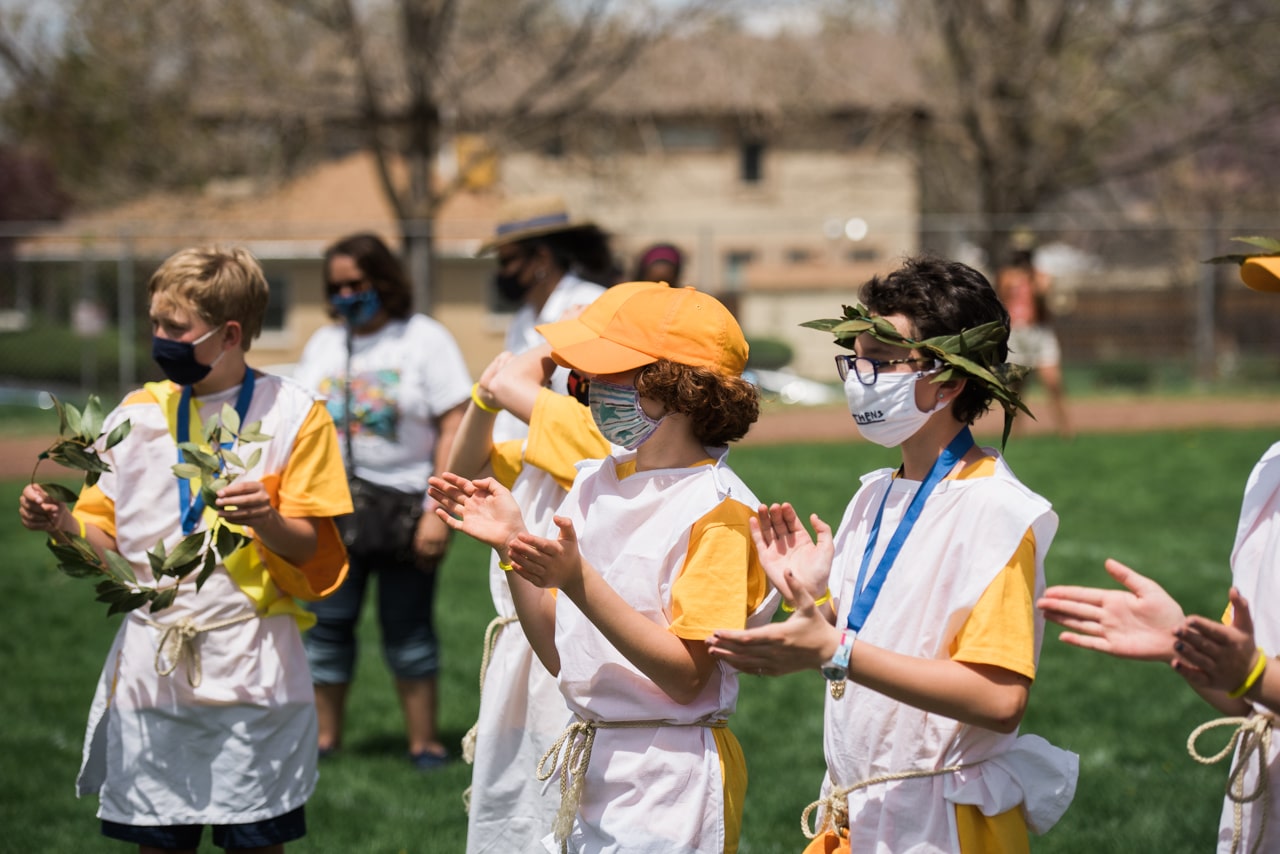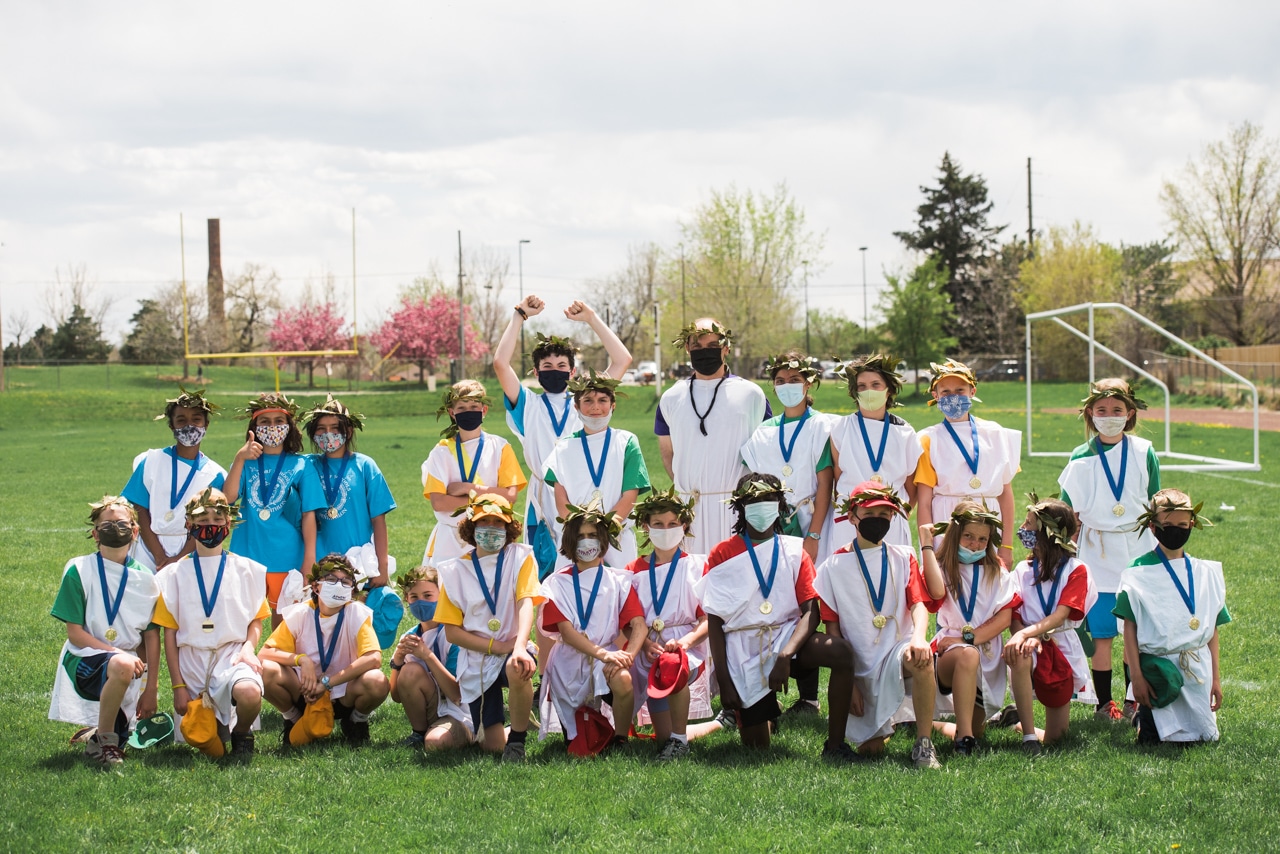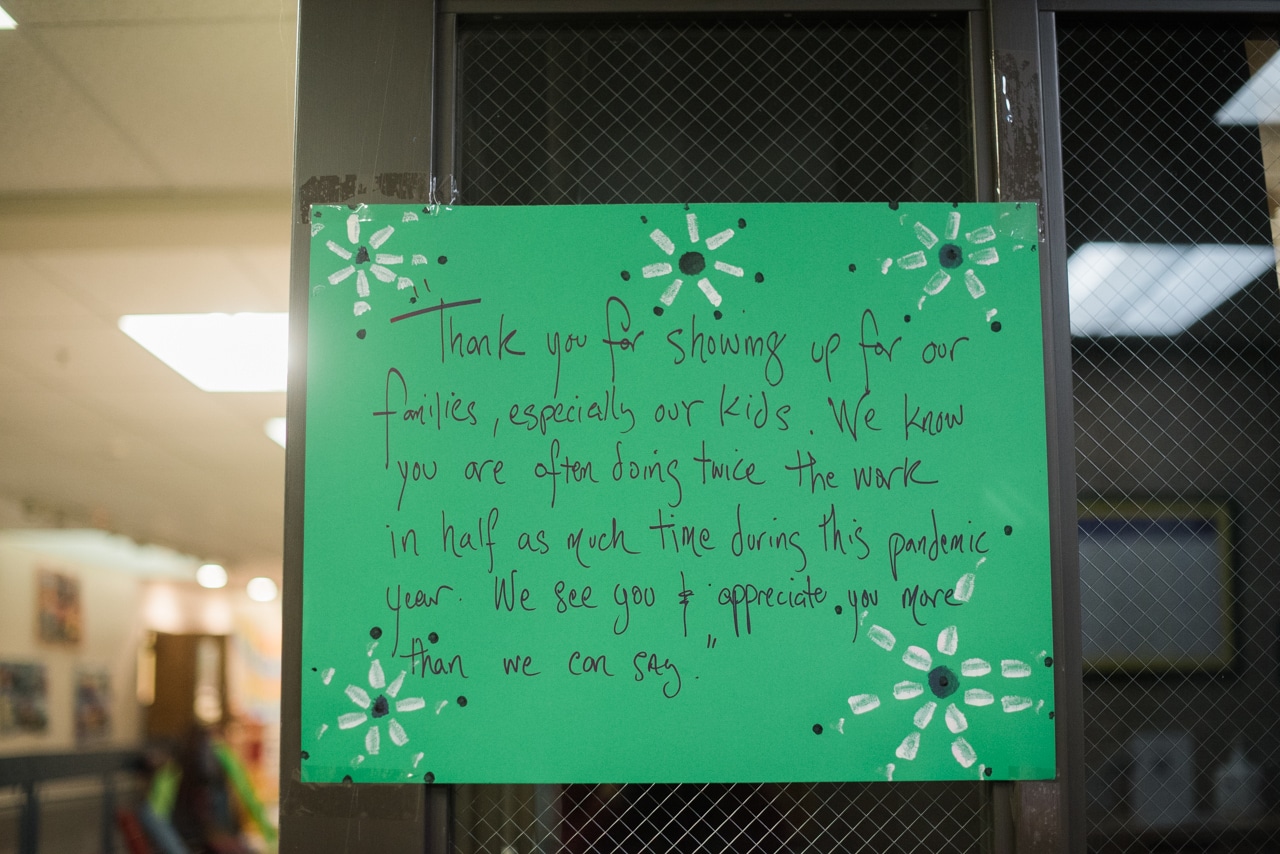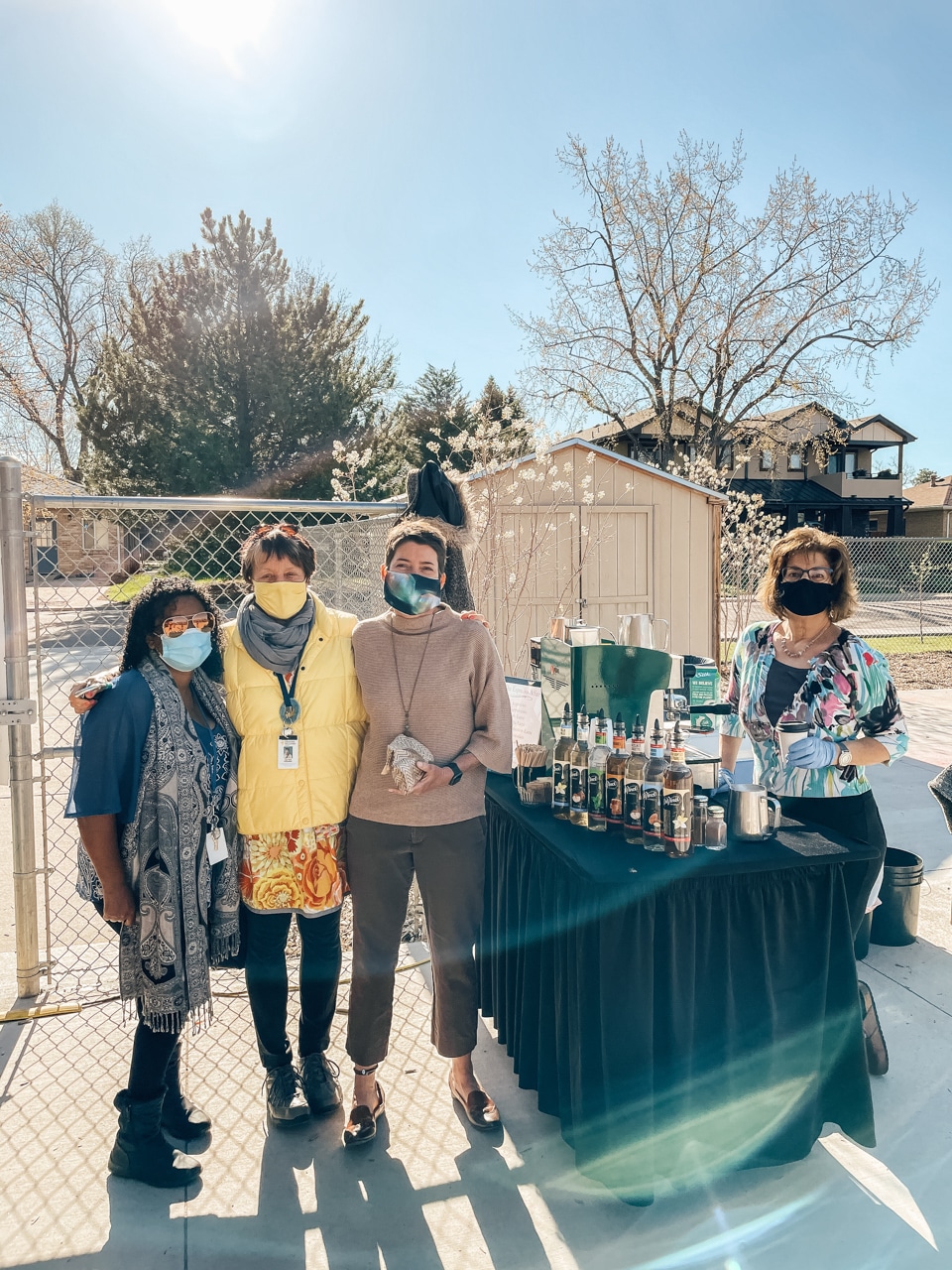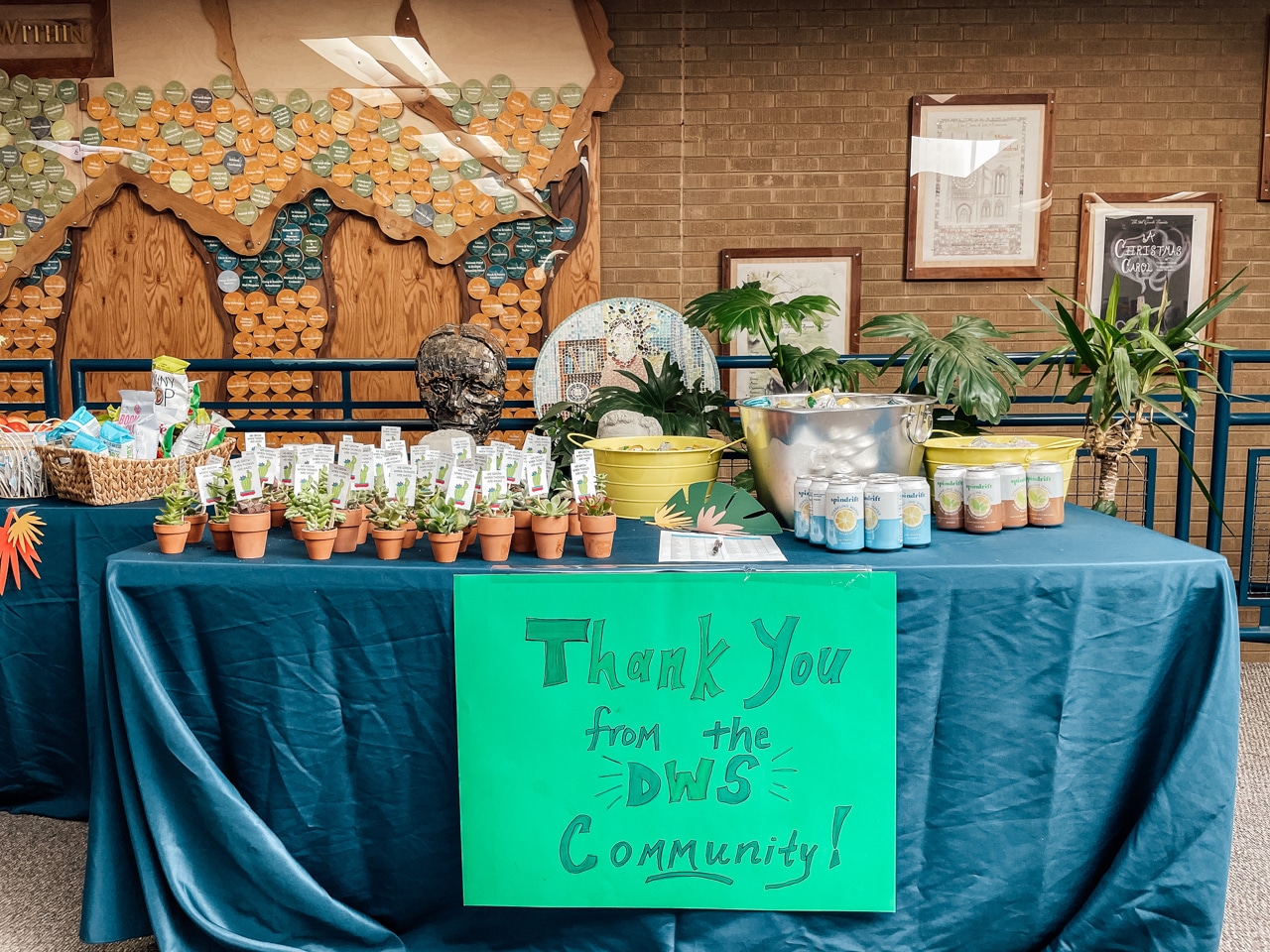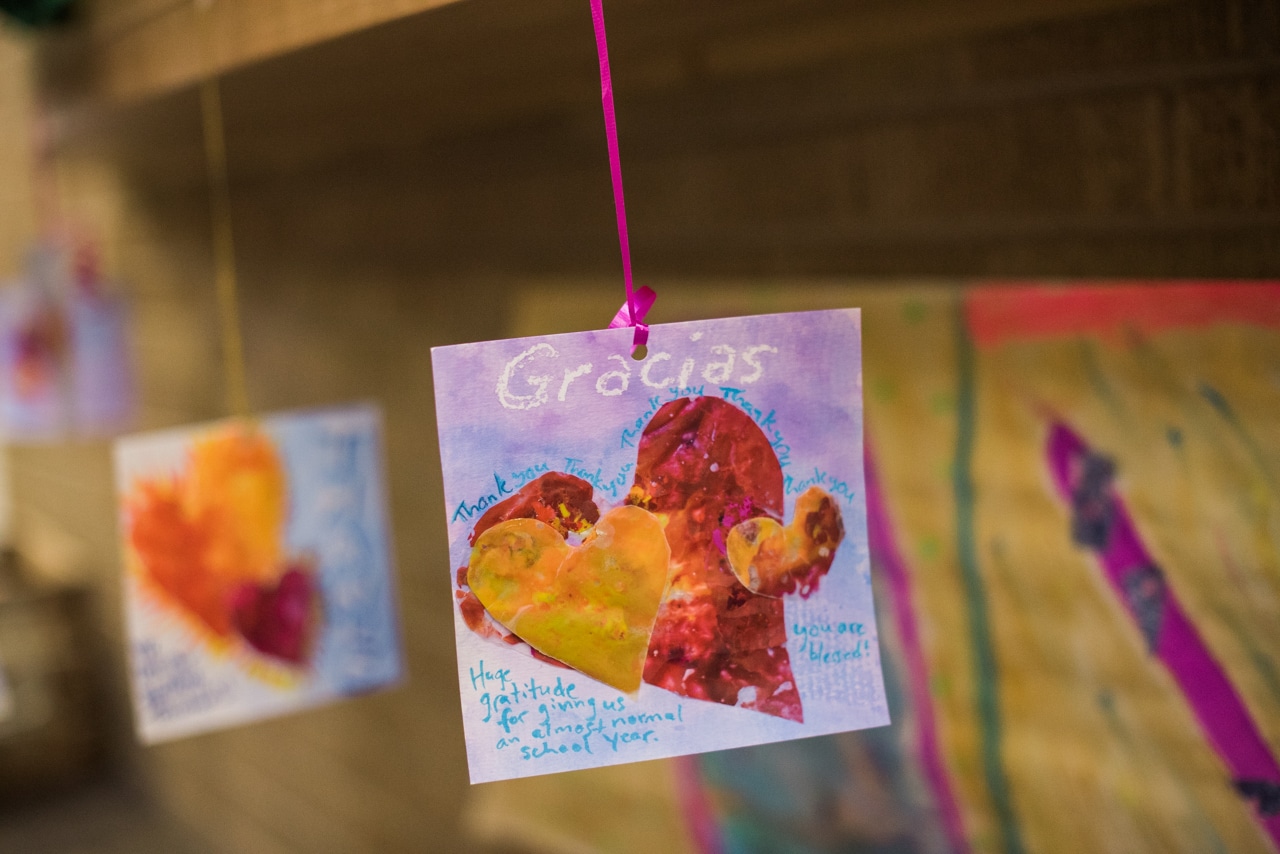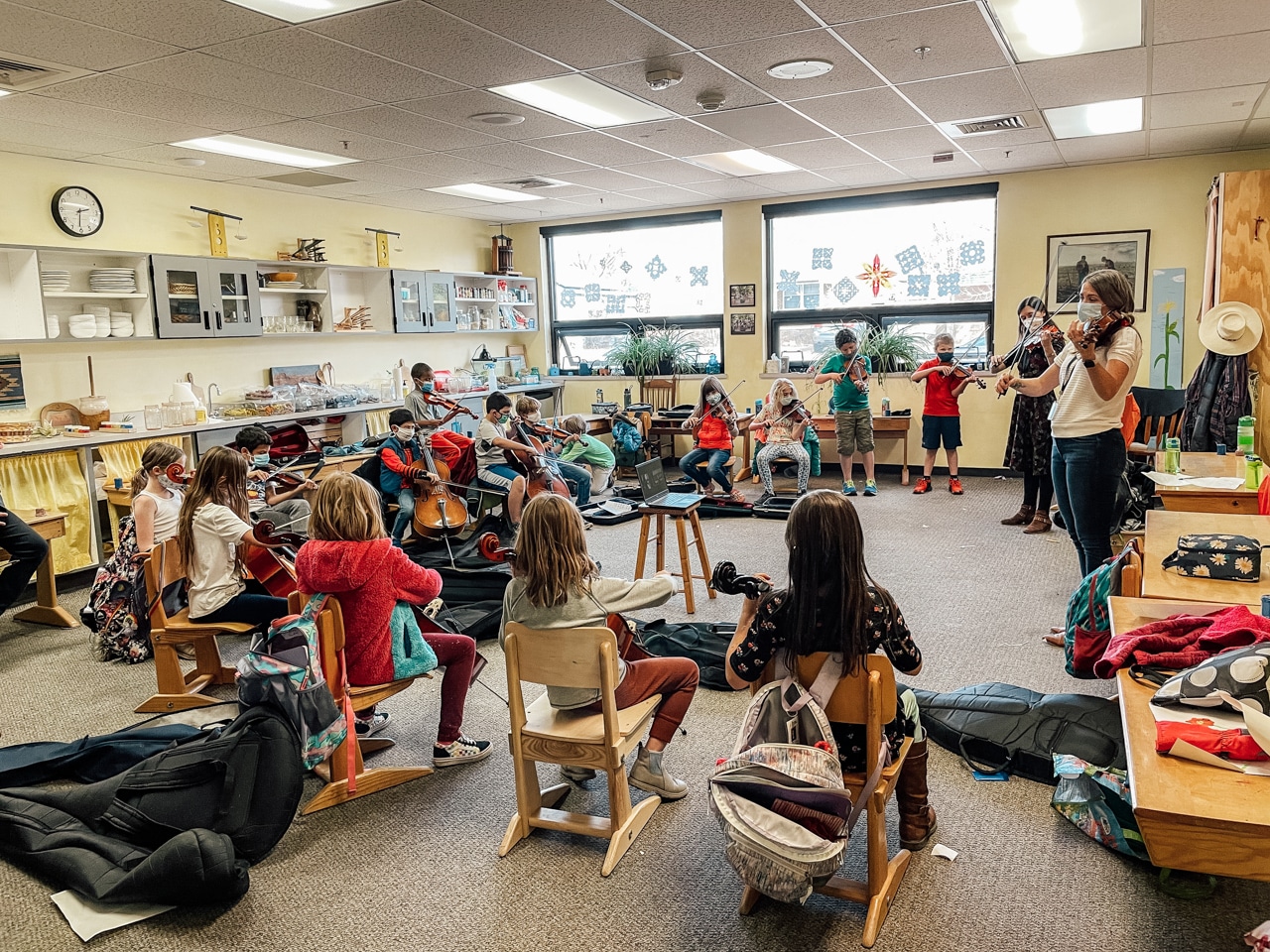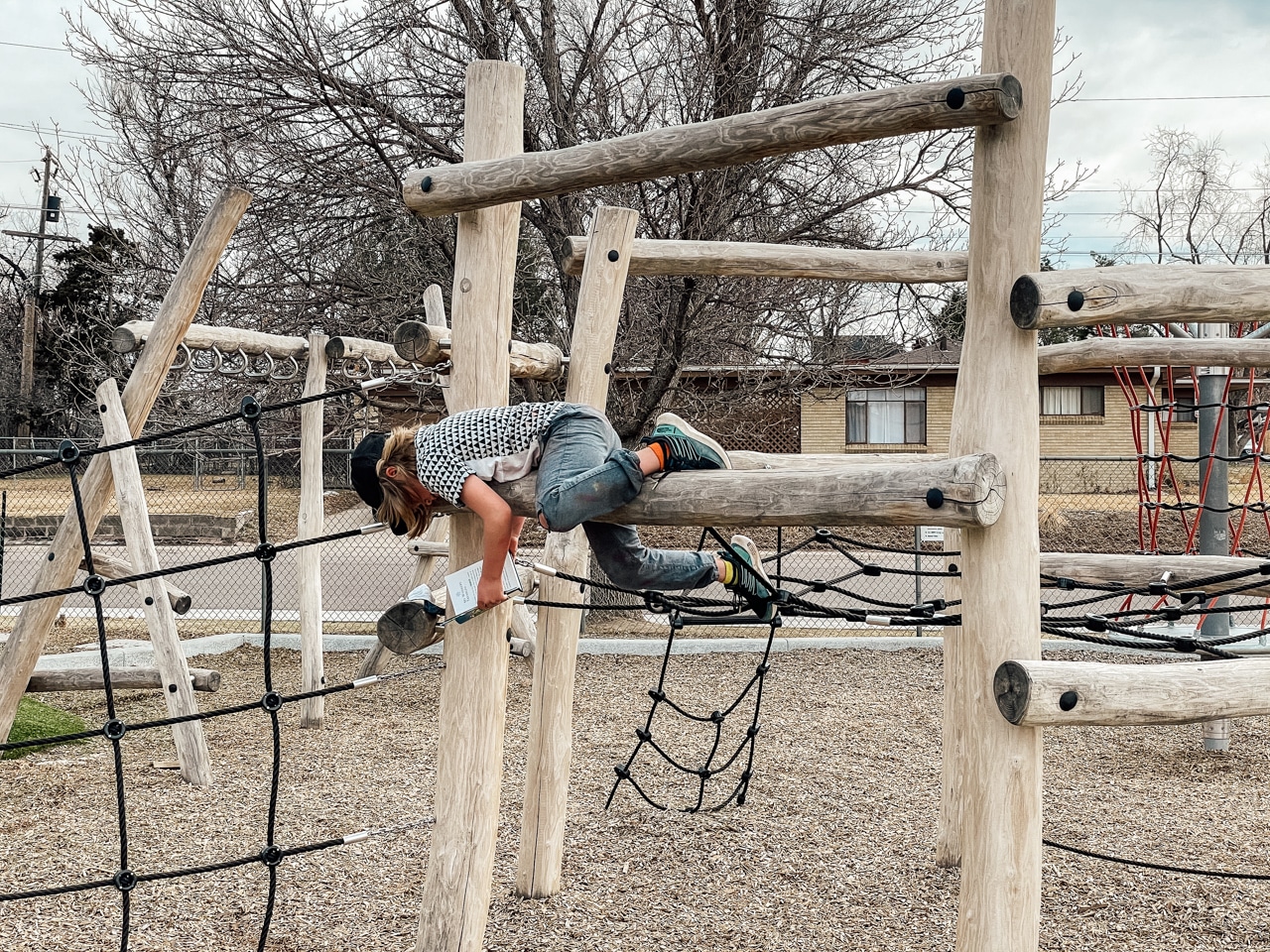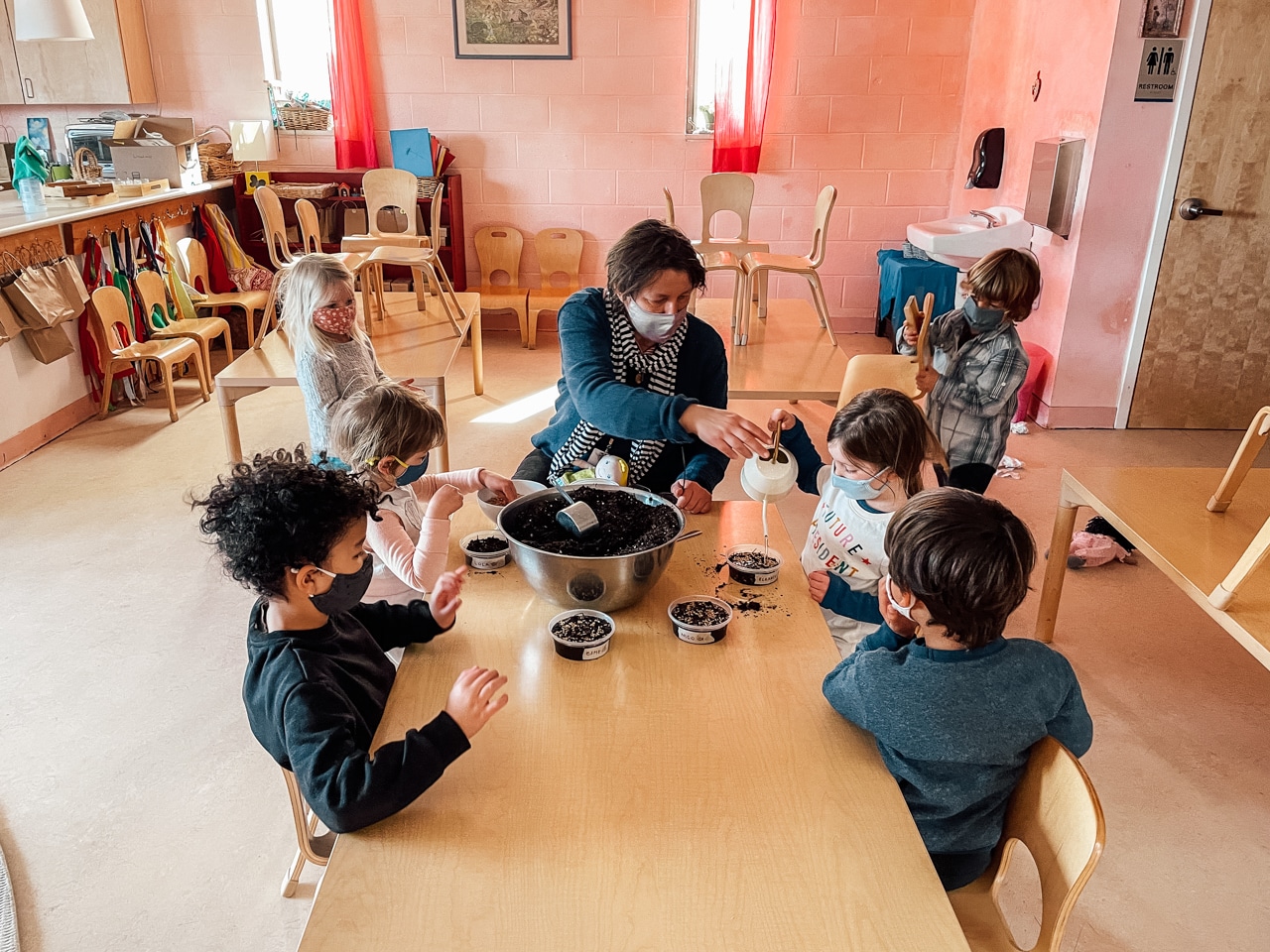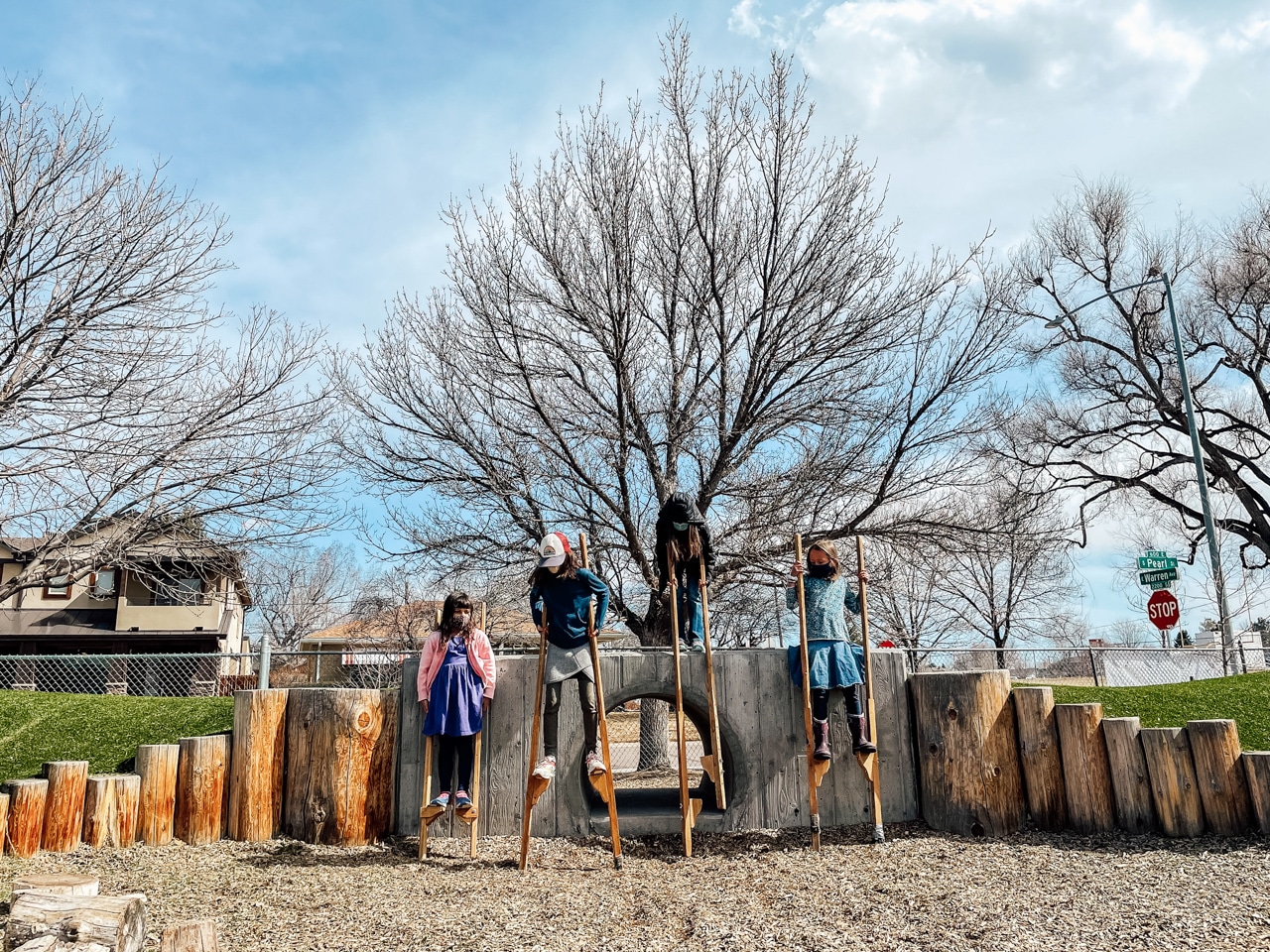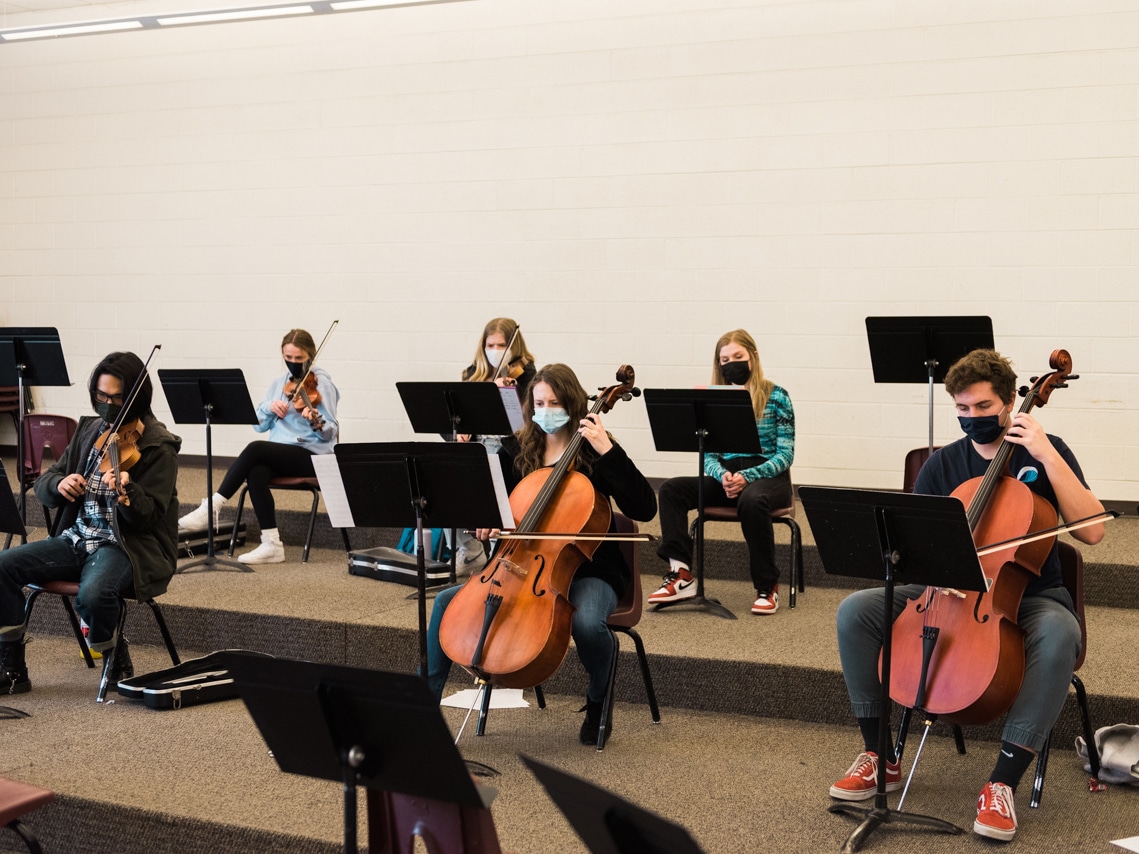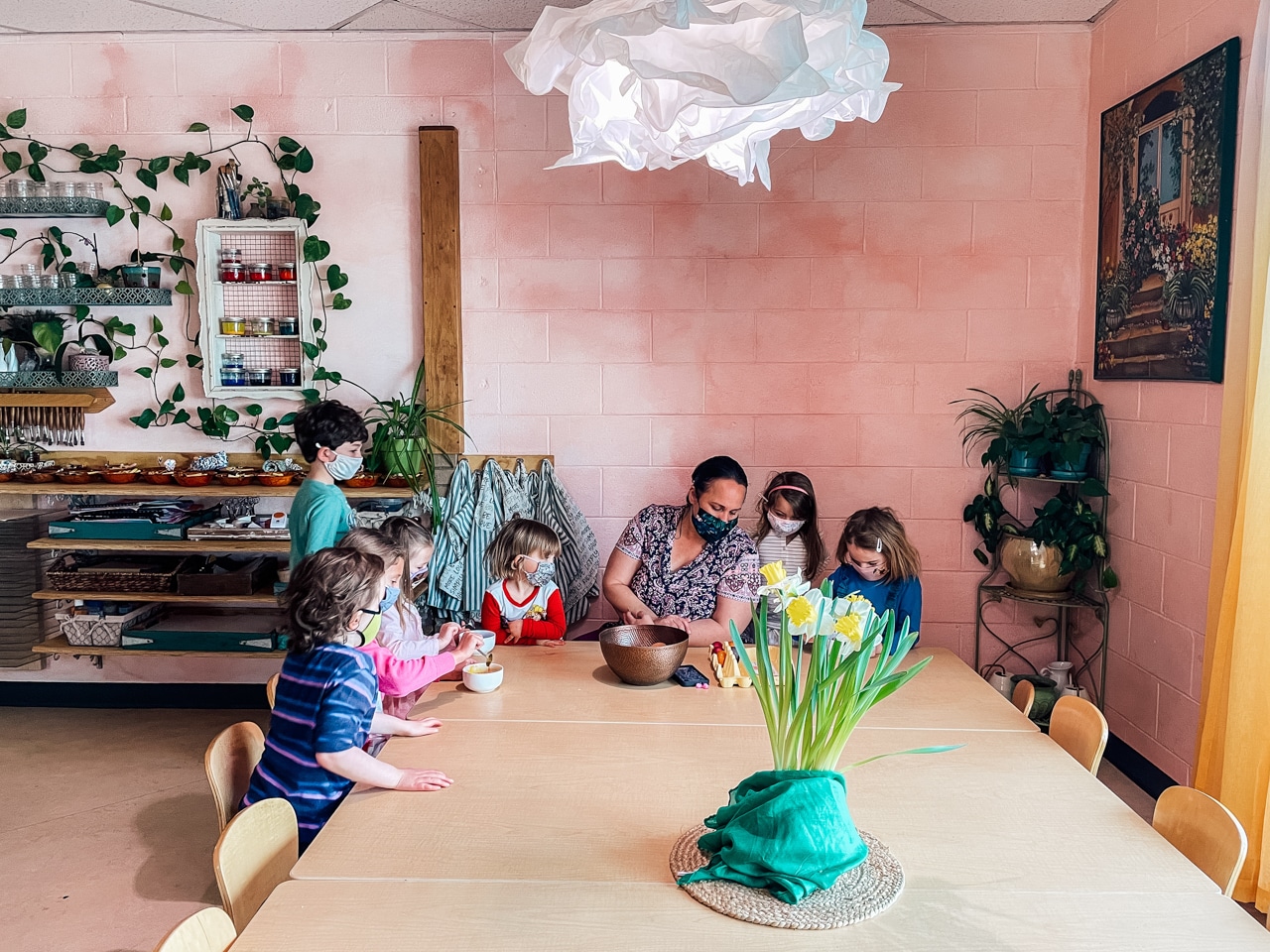The Calendar of the Soul
“The light from world-wide spaces
Works on within with living power;
Transformed to light of soul
It shines into the spirit depths
To bring to birth the fruits
Whereby out of the self of worlds
The human self in course of time shall ripen.” – Calendar of the Soul by Rudolf Steiner, Verse 22
Every morning, before the school day begins, a bell rings throughout the grade school hallway inviting faculty and staff into one of the classrooms for a reading from The Calendar of the Soul. This book of verses was written by Waldorf education’s founder, Rudolf Steiner, to mark the course of the year and the interplay between the outer world around us and the inner world of ourselves. As teachers, it is a reminder of the forces that are at work around us, out of our control, and the possible inner forces that we can awaken within us, that is what is within our control. Despite what Denver’s consistently high temperatures may indicate, summer is drawing to a close. The days shorten, the light descends, and cold creeps in. These things we cannot change. What the verse above does indicate is that we have an opportunity to take the strength of sun, its light, and ensoul it within us. If we transform from passive recipients of light, to active bearers of light we can develop new capacities even as the world grows dim and cold.
As teachers, we know that we cannot control another person, even a child, and nor should we. All we can control is ourselves. So when we prepare for the day, we are chiefly preparing ourselves. The students will bring with them all multitudes of unknowns, and we must be prepared to meet those unknowns–yes with outer preparedness of lessons, but also with inner preparedness of soul.
Parenting is much the same. Just when you think you know your child, they go ahead and change. They grow, they transform, they regress, they display new behaviors begging new questions. All of this is inevitable. Change is certain.
So how do we prepare ourselves to meet our burgeoning, changing children?
We can do so in the same way that the teacher prepares for a class of children.
Steiner shines a light on this situation more broadly, beyond the realm of teaching or parenting, into the realm of anything that is unknown:
“…feelings of fear and anxiety that gnaw at our soul-life in face of the unknown future:
Is there anything that can give the soul a sense of security in this situation?
Yes, there is.
It is what we may call a feeling of humbleness towards anything that may come towards the soul out of the darkness of the future.
But this feeling will be effective only if it has the character of prayer. Let us avoid misunderstanding. We are not extolling something that might be called humbleness in one sense of another; we are describing a definite form of it: Humbleness towards whatever the future may bring.
Ideally, it would mean saying to oneself: Whatever the next hour or the next day may hold, I cannot change it through fear or anxiety, for it is not yet known. I will therefore wait for it with complete equanimity and peace of mind.
Anyone who can meet the future in this calm, relaxed way, without impairing his active strength and energy, will be able to develop the powers of his soul freely and intensively.”
If we develop this feeling of humbleness beforehand, by taking just a few quiet minutes in the morning, then we can respond with more freedom of thought and action in the moment. We can take a moment to really ask ourselves, “What is happening here? Why is this happening? What is this moment asking of me?” And then, without panic or worry, we can respond.
I would say that complementary to humbleness, a kind of bookend, is grace. Our lives are made of countless little moments, little actions. In the middle of it, each moment seems incredibly large, to where if we get really overwhelmed, we have a kind of tunnel vision. Nothing else exists in that moment: nothing to the left, right, up, down, behind me. All that there is is right in front of me and time stands still. Yet of course that is not true. Time rolls on, the world around me continues, and this moment itself is fleeting.
We can gain this kind of perspective by practicing a simple exercise, common among Waldorf teachers, of the daily review. Here is one way Steiner describes it:
“Being able to look at our experiences, joys, and sorrows as if they belonged to someone else is a good preparation for spiritual training. We can gradually gain this ability by taking time after work each day to allow images of the day’s experiences to pass before us in spirit. We should see ourselves in images within these experiences. In other words, we must look in on ourselves in our daily lives as if from outside. We can gain an aptitude for this kind of self-observation if we begin by visualizing small isolated portions of our daily lives. With practice, we become increasingly skillful in this retrospective view, and after considerable repetition, we can quickly form a complete picture.”
Doing this, we can gain perspective over events that happened in a more impersonal way. Perhaps we could have done something better, and now we know for next time. Perhaps that event had to unfold that way, no matter our actions. But similar to not getting anxious about the future, we strive to not dwell on the past. We accept the opportunity to learn, resolve for the future, and leave the past. In this way, we can continue striving to meet our students or our children in the present moment.
Written by Education Director, Vernon Dewey
You can also listen to our podcast episode discussing this topic on Spotify here.
The Rose Ceremony - a Waldorf School Tradition
The sun shines behind a row of seniors, sitting confidently on benches facing a semicircle of students and teachers with eager, expectant faces. 8th graders stand in the wings, some shift from foot to foot, others try to remain standing, straight and ready. 1st graders nuzzle or squirm on their parents’ laps. A vase of roses lies center stage before the seniors.
Every year we begin and end the year with the Rose Ceremony, an event that marks the transition from one stage of life to another. Foundational to Waldorf education is the understanding of human development and its phases. One principle of human development is the seven year phases of life: birth to 7, 7 to 14, 14, to 21. In the Rose Ceremony, we see each of these phases represented as the kindergartener enters 1st grade, the 8th grader enters high school, and the senior enters adulthood (though it should be noted that they’ve got 3 more years until age 21). Three ideals live within each seven year period: goodness, beauty, and truth.
From when a child is born, up through our early childhood program, the child is most nourished by a sense that the world is good. We cultivate this sense of goodness through the loving affection of the teachers, through stories, and through the very daily environment the children experience with their senses. The teacher carries on the parents’ loving gaze and the constant devotion to the child’s well being. Hugs each morning, snuggles on the rocking chair, a nice back rub when settling down for a nap all let the child know that they are loved and in a good, safe place.
Rudolf Steiner describes how during the first seven years the young child nearly “breathes in the whole character of the environment.” Largely unconsciously, the young child directly experiences the physical world and the moral quality behind it. During these years the child unconsciously seeks to develop their lower senses: touch, smell, balance, movement, and life. It is sufficient to say that the child has an innate drive to explore with these senses because they develop a foundational understanding of the world around them, and through that experience of the world, they experience themselves. When we create an environment with a natural diversity of sense experiences, then this innate drive is satisfied, and they experience the world as good. In this way, the kindergarten teacher is like the gardener. The gardener creates an environment that encourages the plant to grow by providing the right soil, the right amount of water, and the right amount of sunlight. The seed was always seeking to grow, this is innate, and the gardener simply helps the plant fulfill its destiny.
When the child enters first grade, Steiner says, “The next seven years are spent not so much breathing in the environment, but listening to what it has to say.” In these years between first and eighth grade, the teacher is a mediator between the child and the world. This is why storytelling is so important in our curriculum. The spoken and written word help guide the students through an understanding of the world, and through the word, and through the teachers, the students develop a feeling that the world is beautiful. The world may not always be good, and this is something that the teacher helps reveal as well, but in the world beauty persists. The teacher’s relationship with the world helps the student develop a healthy relationship with the world. Without a relationship, the world is incoherent and causes anxiety. Through the teacher’s artistic teaching, the student sees that the world is ordered, is coherent, and that they belong.
Of course, the natural authority of the adult erodes with time in order to make room for the authority of the students themselves. High school is when the student can no longer experience truth through the teacher, but only through their own conscious thinking activity. The students must use their physical senses to observe without judgment and to think clearly about these experiences in order to develop concepts free from external influences. What the teacher does provide is an environment and a means for investigating the “riddles of the world,” as Steiner refers to them. The teacher helps “awaken within them an extraordinarily great interest in the world outside of themselves.” The student should have confidence that their teacher has access to the answer, but the teacher guides rather than imposes.
Through these three phases, we help cultivate in our students the ability to not only sense goodness, beauty, and truth, but also to be bearers of them out in the world. When they stand on the stage and receive their high school diploma they look out into the world with confidence and love.
Written by Education Director, Vernon Dewey
To learn more about the Rose Ceremony and how Waldorf education brings truth, beauty, and goodness into the classroom, you can listen to our podcast episode covering this topic here.
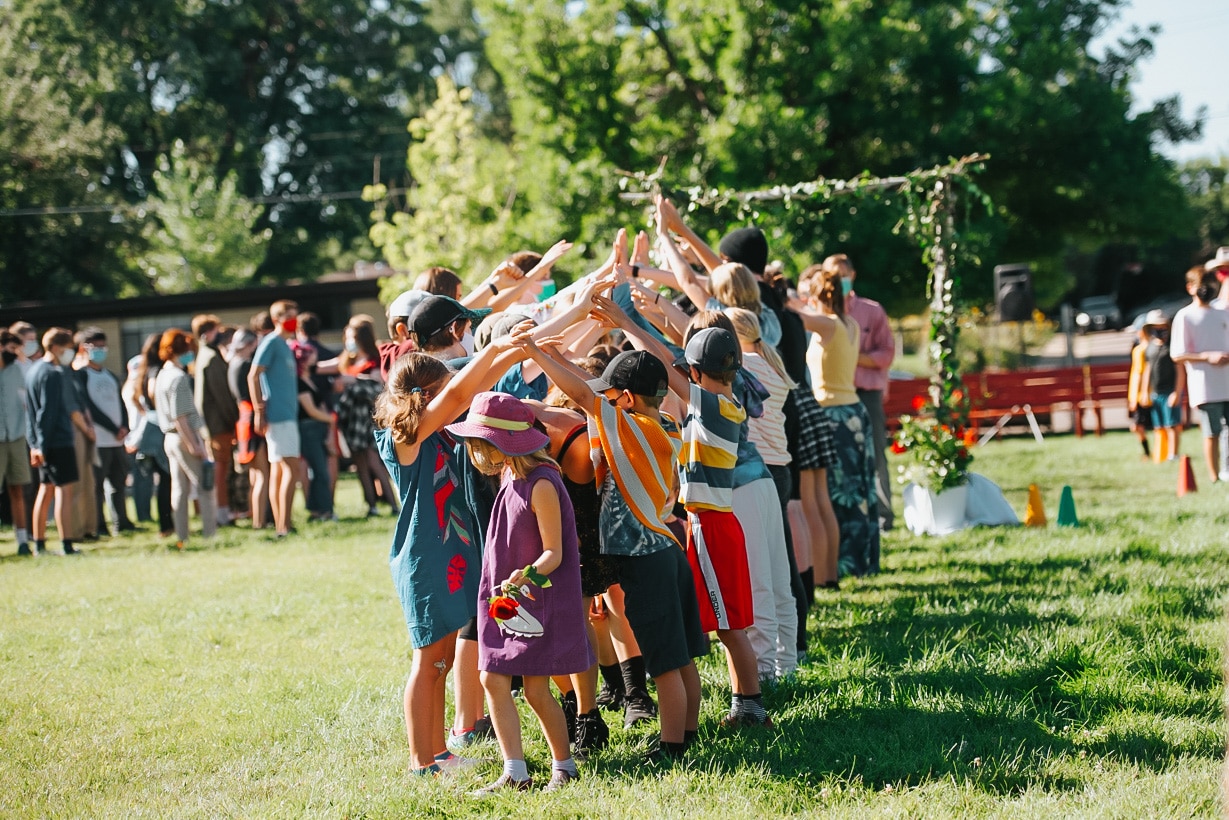
Play Dough Recipe
As one of the parting gifts to our Morning Glory kindergartners, jars of colorful homemade play dough were given to each student with love from their teachers. The children were delighted! It is quite easy to make at home and your little ones will be well entertained with their imaginations at play! For anyone looking for a summer activity, we thought we would share Miss Dawn’s recipe for no-cook play dough below.
Ingredients
2 cups all purpose flour
1/2 cup salt
2 Tbls cream of tartar
2 Tbls oil
food coloring of choice
1 cup boiling water
Instructions
- Mix the first 3 ingredients together
- Add desired food coloring (approximately 20 drops) and oil into the boiling water
- Add wet ingredients to the dry ingredient mixture
- Stir until it becomes a sticky dough
- Remove from bowl and knead on the counter, and add bits of flour to get dough less sticky if needed.
- Have fun! Always store your dough in an air tight container to keep soft.
Miss Dawn's Cool Things To Do

We thought we would re-share “Miss Dawn’s Cool Things To Do” list to help inspire activities to keep your children exploring, creating, and having fun! From shadow puppet shows, to stone painting, to flipping a coin at each corner of your neighborhood walk to see where you end up- there are plenty of activities to keep the children engaged with healthy activity! These ideas can continue to be enjoyed all summer long!
For the youngest children
- Give your child a collection of interesting items on a tray for them to play “laboratory or apothecary”. These items can include funnels, bottles, corks, tubes, rubber bands, dropper bottles, tweezers, tongs, goggles, kitchen gloves, etc.
- Make Miss Dawn’s no-cook play dough for endless possibility
- Set your child up at the kitchen sink with warm bubbly water and simple kitchen items such as funnels, a whisk, cups, small pitchers, a sieve, even marbles and sponges, etc. Most children will play at this for a long time!
- Make aftercare nachos by heating ½ can refried beans, ¼ cup water, ½ lb shredded cheese (do not use pre–shredded cheese as it does not melt properly) and 1 cup 505 brand green chile sauce (salsa can be substituted) in a crockpot or a saucepan on the stove. Heat and stir until creamy. Serve with corn chips!
- Make shadow puppets. Cut simple people and animals out of paper and tape them to sticks. Set up a flash light in a dark room and make a play with your shadow puppets.
- Have your child collect 6–12 of their small items. Have them hide in their room while you hide the items. (remember where you hid them!) Give your child a flashlight, magnifying glass and/or a hat. They get to be the detective to find the items! Maybe even leave clues behind like a moved chair or a turned up corner of the rug!
- Go for a walk and bring two bags. In each bag put identical leaves. Choose ones with different shapes and textures. After returning home your child can play a game where they choose a leaf from bag #1 and using only their hands they have to find the same leaf out of bag #2. No peeking!
- Birds are making nests this time of year. Give them nesting material by brushing your cat or dog. Put the hair outside in the trees and then watch for the birds to come take it away!
- Go for a walk together. Take a quarter and when you come to the end of a block or to an intersection flip the quarter. Heads you turn right and tails you turn left. Where will you end up?
For the oldest children
- Build a house of cards. See how high you can build it before it falls down!
- Make a puzzle. Take a magazine page and paste it evenly to a piece of thin cardboard such as a cereal box. Cut it into interesting and odd shapes. Give it to a sibling to solve or mail it to a friend!
- Make a sugar scrub to soften hands and feet by mixing 1 cup granulated sugar with ½ cup melted coconut oil. Add 12–15 drops of your favorite essential oil or 1 tsp vanilla extract for a scented version!
- Make aftercare nachos by heating ½ can refried beans, ¼ cup water, ½ lb shredded cheese (do not use pre–shredded cheese as it does not melt properly) and 1 cup 505 brand green chile sauce (salsa can be substituted) in a crockpot or a saucepan on the stove. Heat and stir until creamy. Serve with corn chips!
- Find stones about the size of your palm. Paint them with kind words and images. Leave them around your neighborhood for your neighbors to find!
- Use sticks or Q–tips and paint to make a “dot” painting. This can also be done with paper dots made from a paper punch and colored paper.
- Take apart a paper bag and put it back together. Take apart an envelope, make a duplicate and put them both together. Move onto harder things to take apart and put back together such as a ball point pen, a picture frame or a broken lamp (with parent’s approval of course!)
- Start a family history book. Include personal stories of all your relatives, pictures, favorite foods, places they’ve visited and lived, pets they’ve had, etc.
- Make your own Mad Libs. Write a descriptive short story or interview and leave certain adjectives, adverbs, nouns, numbers, names and verbs out of the story with a place to write it in. Call a friend on the phone and do Mad Libs with them.
- Make shadow puppets. Cut simple people and animals out of paper and tape them to sticks. Set up a flash light in a dark room and make a play with your shadow puppets.
- With permission hide something that belongs to a sibling and give them a treasure map or set up a series of clues for them to solve to find their missing item.
- Go for a walk and bring a bag to pick up trash during your walk.
- Toothpick architecture. Use toothpicks and play dough or clay (to fasten the ends together) to build a house, a neighborhood, a city, a bridge, etc.
- Use books or boxes on a table to set up a table hockey court. Leave a “goal” open at each end. Use a waded up piece of paper as the puck and your hands to hit the puck across the table into your opponent’s goal.
- Use yarn to wind around table legs and door knobs. Fill a portion of the room with yarn pulled taut. Pretend you are a cat burglar and you have to get through the invisible security to the other side of the room. Climb under, over, around, but don’t touch the yarn or you’ll have to start over!
- Make a house rule for the day.This is a fun family activity that can go all day or just for an hour. Make up rules such as: Always enter the kitchen hopping on one foot, Say the entire alphabet before sitting down, snap your fingers every time your name is said, count backwards from 10 each time you pass a mirror, run outside and then back in every time the phone rings. Make your own funny rules to follow!
- Learn how to make pancakes! On Saturday make your parents breakfast in bed!
- Birds are making nests this time of year. Give them nesting material by brushing your cat or dog. Put the hair outside in the trees and then watch for the birds to come take it away!
- Fill a balloon with flour or sand or rice. Tie off the balloon and now you have your own squishy ball. Make an extra for your parents to play with when they are on their Zoom meetings!
- Watch for Bee swarms, cocoons and owl pellets around. I have tiny Eastern Screech Owls living in the trees outside my house. I’ve been watching for owl pellets to dissect!
- Buy or make postcards. Send jokes to your friends.
- Record yourself reading stories. Send them off to younger cousins so they can hear you read to them. Better yet call them up on the phone and read to them live.
- Wash your parent’s car with a bucket and a big sponge and a hose to rinse at the end!
- Make a paper–mache globe with a balloon and paint the continents on it.
- Get good at skipping rocks on the water.
- Have a family talent show.
- Whittle
- Set up a domino track. See how complicated you can make it with different levels.
- Make a maze.
- Write and illustrate a comic strip.
- Learn to make balloon animals.
- Reproduce a work of art using only trash–plastic bags, bottle caps, twist ties, plastic containers, etc.
- Make a flip book.
- Learn how to say hello in 10 different languages

5th Grade Pentathlon
Every year, the 5th grade class studies Greek civilization, learning about the government, history, mythology and culture. As a culmination of their studies, each spring the students participate in a Pentathlon, which is an athletic event based on the ancient Greek games. As with all aspects of our Waldorf curriculum, the event is designed to relate directly to the students’ learning and development, bringing relevancy and enthusiasm for their studies. Grouped into four City States- Sparta, Athens, Corinth, and Thebes- the students compete in five events including long run, long jump, discus, sprint, and javelin. In preparation for the festivities, the students also write odes to their favorite Greek goddess or god and recite their compositions to those gathered as part of the opening ceremonies. The ritual opening, with the lighting of the torch and the offering of poems, very much sets a beautiful tone for the day. While the children put forth their best efforts in achieving results in speed and distance, more important is their display of grace, beauty, and form. In years past, our school has gathered with other neighboring Waldorf schools for this highly anticipated event. Although this year may have looked a bit different with a pentathlon only with our school, it was still very much a day full of fun, community, nobility, grace, and honor.
We look forward to being the new Colorado host in the future for many pentathlons to come!
Faculty & Staff Appreciation Week
As part of Teacher Appreciation Week this past week, our faculty & staff were showered with a new surprise each day as a token of gratitude from our parent community. Thanks to the generosity and thoughtfulness from our Parent Council Reps, parents, and families, they were treated with Summer Self-Care bags including goodies from Topo Designs, lunch in the courtyard from Cochina Taco, coffee cart & pastries, snack station & succulent plants, and for a grand finale, dinner gift cards and individual hand pies! Along with encouraging notes sprinkled throughout our hallways, there was certainly much warmth and gratitude in the air for all who make our community a beautiful place to learn and thrive.
Below is a letter from our school director, Kelly Church:
Dear Parents and Parent Council Reps,
The support you have shown to all of us here at the school this year has been amazing! Throughout the year, each time you have recognized our efforts it has put a new spring in step and a swagger in our walk! Your acknowledgement of our work in this challenging year has made a huge difference. We so love being with your children and we are honored to spend our days with each of them. Thank you for taking the time to share and show your appreciation, we feel truly loved.
With gratitude for you all,
Kelly
There were many, many words of appreciation shared amongst our faculty & staff, including:
- “Yummy, Yuuuuumy, Yummmmy! This is the best week ever!” – Christa Gustafson
- “Thanks to Parent Council for all of your work on all of this” – Mike McHenry
- “Many thanks to parent council for the goodies. I feel the love!” – Sarah Meyer
- “The coffee lady had everything I wanted & more! I’m even trying something I’ve never had before, which is saying something because coffee is my religion!” – Brie Kaiser
- “Thank you so much for all the surprises this week. They have really been helping me.” – Sarah Boyer
- “This is the best thing that’s ever been done! The Topo bags are so cute and I need to get some for all my girlfriends! Amazing.” – Brie Kaiser
- “The abundance is so striking. I’m speechless.” – Deb Wolf
- “It sort of feels squishy, like being hugged by parent council!” – Dawn Archer
- “Thank you, I feel so loved – this year has been so hard.” – (through tears) Milandra Pfister
- “Your little gifts throughout the year were wonderful and greatly appreciated. Your support means a lot. Thank you.” – Faustina Pfister
- “I feel so supported and seen. There was such thoughtfulness behind each surprise” – Jessie Cartwright
- “With our hearts, hands, and bellies full, we feel so much love from this incredible community. Thank you!” – Jen Lamboy
This would not have been possible without Carrie Tentori & Nicole Reinan spearheading the efforts, Parent Council Reps collecting sentiments about all of our faculty & staff, and of course our caring parents & families for donating so generously.
We would also like to thank the wonderful businesses in our greater Denver community for helping make this week a success, including Cochino Taco, The Espresso Affair, Hinman’s Bakery, Topo Designs, Keith’s Coffee, Denver Beer Co, Mod Market, and also the following businesses from months past including Snarf’s Sandwiches, Phia Alchemy, Santiago’s, Tokyo Joe’s, Crock Spot, and Steam!
Thanks to all for the care, commitment, and intention that is shared within our wonderful community each and every day.
Why We All Play
How do we develop confident, creative, and joyful student-athletes who champion teamwork, participation, and growth? That is the question that drives our athletics program at The Denver Waldorf School.
This ethos begins with a simple no-cut commitment: any DWS student who wishes to play a sport will have that chance. Whether it’s cross country, volleyball, basketball, or ultimate frisbee, our coaches embrace the opportunity to help each and every student grow and develop their talents and work ethic.
Too often, however, youth athletics are plagued by a very different ethos—one that values that domination, recognition, and exclusivity above all else. In Beyond Winning, Waldorf educator and author, Kim John Payne, laid bare the pitfalls of this mindset:
“[T]he obsession with early success in a win-at-all costs culture has created a pressure chamber in which top prospects, even at the age of five or six, are funneled into elite programs while the majority of kids . . . are robbed of the opportunity to discover and develop their talents . . . The result is a youth sports landscape pockmarked with children who end up—at age eleven or twelve—with fractured egos, low self-esteem, and, in some cases, severe physical injuries. It’s why millions of American kids quit organized sports just as they become teenagers.”– Kim John Payne, Luis Fernando Llosa & Scott Lancaster, Beyond Winning: Smart Parenting in a Toxic Sports Environment (2013).
As a school committed to developing the whole child (head, heart, and hands), we believe athletics should boost our students’ understanding of self-worth, increase their self-esteem, and promote health and wellbeing. In short, we believe physical activity through sports is an opportunity for healthful growth.
It’s also the smart tactic to nurture joyful love of sport. As Payne points out, almost three-quarters of America’s youth quit organized sports by age thirteen — precisely at the age when sports can be taken more seriously and occupy a more central role in healthy development.
Imagine a sports culture where our teenage athletes experience joy instead of burnout, embrace team success over individual glory, and value participation over exclusion. By creating a healthy sports culture within DWS, we make these goals into our reality.
We create a culture that nourishes the hearts, souls, bodies, and minds of every student-athlete. It begins with a commitment to let everyone participate, and this is why we all play.
The Denver Waldorf School Happenings - February 2021
The Denver Waldorf School is a k-12 independent school in Denver, Colorado
The Denver Waldorf School Happenings- January 2021
The Denver Waldorf School is a k-12 independent school in Denver, Colorado




